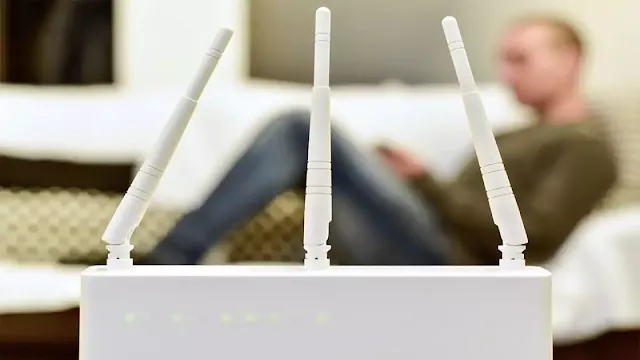Searching for an easy method to connect a WiFi antenna to the motherboard? Don't worry.
This step-by-step guide will walk you through the process of connecting a Wi-Fi antenna to your motherboard, ensuring a hassle-free installation.

How to connect a Wi-Fi antenna to the motherboard
1. Gather Your Materials:
Before diving into the installation process, make sure you have all the necessary materials at hand. This includes your Wi-Fi antenna, the motherboard's user manual, a small Phillips-head screwdriver, and any additional cables or adapters that may be required for your specific setup.
2. Identify the Wi-Fi antenna connectors:
Most Wi-Fi antennas come with connectors that need to be attached to your motherboard. Identify these connectors on your Wi-Fi antenna; they are typically labeled as "antenna," "WLAN," or similar. Take note of the specific types of connectors your antenna uses, as this will be crucial for the next steps.
3. Locate the Wi-Fi antenna ports on your motherboard:
Refer to your motherboard's user manual to locate the Wi-Fi antenna ports. These ports are usually labeled with symbols like "WLAN," "ANT," or "Wi-Fi." The manual will provide you with a detailed diagram of your motherboard, helping you pinpoint the exact location of these ports.
4. Power Off Your Computer:
Before making any hardware connections, it's essential to power off your computer and disconnect it from any electrical sources. This ensures your safety during the installation process and prevents any potential damage to your hardware.
5. Connect the Wi-Fi antenna to the motherboard:
Carefully connect the Wi-Fi antenna connectors to the corresponding ports on your motherboard. Ensure a snug fit, but be gentle to avoid damaging the connectors or ports. If your antenna requires screws to secure the connection, use the small Phillips-head screwdriver to fasten them securely.
6. Adjust antenna placement:
Some Wi-Fi antennas have adjustable arms or bases to optimize signal reception. Experiment with different orientations and placements to find the best configuration for your setup. Keep in mind factors such as signal strength and potential interference from other electronic devices.
7. Power on Your Computer:
Once the antenna is securely connected and adjusted, power on your computer. The operating system should automatically detect the new Wi-Fi hardware. If required, install any drivers or software that came with your Wi-Fi antenna to ensure optimal performance.
8. Test Your Wi-Fi Connection:
To verify that the Wi-Fi antenna is functioning correctly, connect to your wireless network and run speed tests. Check for a stable and reliable connection, and troubleshoot any issues if necessary.
Conclusion
By following these simple steps, you can successfully connect a Wi-Fi antenna to your motherboard, enhancing your desktop computer's wireless capabilities. Enjoy the benefits of a faster and more reliable internet connection for all your online activities.
Frequently Asked Questions
1. Which Wi-Fi antenna connectors are commonly used, and how do I identify them?
Wi-Fi antennas typically use connectors labeled "antenna," "WLAN," or similar. The most common types are RP-SMA (Reverse Polarity SubMiniature Version A) and SMA (SubMiniature Version A). RP-SMA connectors have a male pin inside, while SMA connectors have a female socket. To identify these connectors on your Wi-Fi antenna, look for the corresponding labels or symbols provided by the manufacturer. Additionally, consulting the user manual that comes with your antenna can offer valuable information about the specific connectors used.
2. Where can I find the Wi-Fi antenna ports on my motherboard?
The location of Wi-Fi antenna ports on a motherboard can vary, so it's crucial to refer to the motherboard's user manual. Typically, these ports are labeled as "WLAN," "ANT," or "Wi-Fi" and may be located near the I/O shield on the rear of the motherboard. The user manual will provide a detailed diagram, allowing you to pinpoint the exact location of these ports. In some cases, the ports may be integrated into a wireless module or an external bracket, so careful examination of the manual is essential for a successful connection.
3. Do I need any additional cables or adapters to connect the Wi-Fi antenna to the motherboard?
The need for additional cables or adapters depends on the specific setup of your Wi-Fi antenna and motherboard. Some antennas come with all the necessary cables and adapters, while others may require separate purchases. Review the contents of your Wi-Fi antenna package and check the user manual to identify any supplementary items needed. If adapters are required, ensure they match the connector types of both the antenna and the motherboard for a secure and reliable connection.
4. Is it necessary to power off my computer before connecting the Wi-Fi antenna to the motherboard?
Yes, it is crucial to power off your computer before connecting the Wi-Fi antenna to the motherboard. This precautionary measure ensures your safety during the installation process and minimizes the risk of electrical damage to your hardware. Once the computer is powered off and disconnected from any electrical sources, you can safely proceed with connecting the antenna to the motherboard.
5. How can I optimize the placement of my Wi-Fi antenna for better signal reception?
Wi-Fi antennas often come with adjustable arms or bases, allowing users to optimize the placement for improved signal reception. Experiment with different orientations and positions to find the best configuration for your specific setup. Factors such as signal strength, interference from other electronic devices, and the physical layout of your space can influence the optimal placement. Consider adjusting the antenna's angle or height to achieve the most stable and reliable Wi-Fi connection.